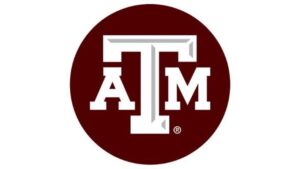Courtesy of Texas A&M Today
With the long-awaited sequel “Twisters” now in theaters worldwide, Texas A&M University tornado expert Dr. Christopher Nowotarski, an associate professor in the Department of Atmospheric Sciences, helps movie-goers separate fact from fiction in both the new hit movie and its 1996 predecessor, “Twister,” while reflecting on how the original film has influenced the field of atmospheric sciences for nearly three decades.
Have you seen the original “Twister” movie and the new “Twisters” movie? If so, what aspects of these films did you find most compelling or realistic, and why?
I first saw the original “Twister” movie as a 9-year old weather enthusiast at an old-fashioned drive-in movie theater in Pennsylvania (those who have seen the movie will understand the particular thrill of watching this movie there for the first time!) I’ve since seen that movie many times now, having had my own experiences as a severe storms researcher who has engaged in field data collection in and around tornadic thunderstorms (in other words, a storm chaser). I recently saw the new “Twisters” movie in a local theater in College Station with a group of friends, including another Texas A&M atmospheric sciences professor Dr. Erik Nielsen, who co-teaches a storm-chasing field class with me. I think that both movies do a good job at capturing the essence of storm chasing, both professional and recreational, and showcase the varied motivations and passion that those of us who chase tornadoes have for these storms. The new movie, in particular, does a good job of including real terminology that meteorologists use when discussing severe storms in the right context and showing a variety of real instruments, including some cameos from some of my real storm-chaser colleagues! Of course, there’s a heavy dose of Hollywood magic sprinkled on both movies. So naturally, some of the plot points, depiction of what tornadoes can do or what science can realistically achieve are exaggerated, dramatized or physically impossible, but that’s what makes them fun movies and not documentaries.
In both the original “Twister” and the new “Twisters” movie, storm chasing is portrayed as a thrilling and dangerous activity. How accurate is this portrayal compared to real-life storm chasing and tornado research?
The short answer is “it depends.” Both the original and new movie take some dramatic license when it comes to scientists who chase tornadoes to collect data. In reality, while we can and do need to get quite close to storms and tornadoes to collect the data we seek, there is no science goal that requires people to drive into ongoing tornadoes. Even before the original movie, scientists hoped to have tornadoes hit instruments that were dropped in the potential path of a tornado, but this was often done well in advance of the tornado and at a safe distance. Some data collection requires driving into the heavy rain and hail around tornadoes to collect measurements of winds, pressure, temperature and moisture in the parts of storms that are critical for tornado formation. I’ve done this as a graduate student, and while it can be thrilling and adrenaline-pumping at times, it’s rarely dangerous. Although this can result in the occasional detour through a farm lane, a slip of the car off a wet dirt road or a broken windshield, such scientists are never intending to be where the tornado itself could pose them a risk (though the rare accident does happen). The new movie also portrays a group of storm chasers who focus on getting wild videos for their social media followers, rather than collecting useful scientific data. Such people and groups do exist, and they have tried to get as close as possible or inside of weak tornadoes. Even their actions are somewhat dramatized in the movie, though.
Is there any real-world basis or precedent for the tools and equipment depicted in these films?
Yes. In the first movie, the protagonist scientists’ goal is to drop an instrument pod into the path of a tornado. This was inspired to some degree by a real science project called the TOtable Tornado Observatory (TOTO), which was a heavily weighted set of observing equipment deployed in the 1980s. Even the “Wizard of Oz” reference in the movie was inspired by reality, as their instrument was called “Dorothy.” Where the movie diverges is that the real instrument did not have an array of sensors meant to get sucked up into the tornado and fly around reporting data. Somewhat ironically, or perhaps inspired by the movie, recent efforts by real scientists have tried to deploy arrays of balloon-borne sensors into the parts of storms around tornadoes to measure conditions above the ground. In the new movie, a key plot point is the deployment of portable Phased Array Radars (PARs) around ongoing tornadoes. In real life, we do have mobile radars, including PARs, that are deployed around tornadic storms, but usually at a much farther and safer distance than depicted in the movie. Like in the movie, having multiple radars allows us to get a fuller picture of the wind field in and around tornadoes. One aspect of the new movie that lacks real-world basis is the idea of destroying individual tornadoes by having them suck up desiccant powder. While meteorologists have long attempted to modify how individual clouds can produce rain through a process known as cloud seeding, it’s highly unlikely that the small-scale methods depicted in the movie would have any real impact on tornadoes. To my knowledge, no one is actively pursuing such an approach.
Have there been significant real-life advancements in tornado prediction and early warning systems inspired by such research?
Tornado and severe-storms scientists throughout the world have been trying to improve the lead time and accuracy of tornado warnings for decades. We have made some significant progress due to tools like a nationwide network of Doppler radar and, more recently, a network of dual-polarization radar. This network is probably our best warning tool for tornadoes and has allowed forecasters to issue warnings for most of the tornadoes that occur. Outside of National Weather Service (NWS) radars, private companies are starting to deploy their own radar networks to fill in gaps in the radar network that can help emergency managers, forecasters and broadcast meteorologists to better warn the public. One such radar was recently installed on the roof of the O&M building on the Texas A&M campus, in partnership with the company Climavision. A key problem that remains is the amount of time warnings are issued before a tornado occurs, or lead time, which has been improving but still needs some work. Another key problem — and the new movie mentions this — is false alarms. The majority of tornado warnings (around 70%) do not end up resulting in a tornado. We fear this can lead to a sense of complacency in the public, which may prevent them from responding to future tornado warnings where there may actually be a tornado. Many of these forecasting efforts are aided by field work similar to what is depicted in the movies as well as improved computational power and modeling. A relatively new effort at the National Severe Storms Laboratory called Warn on Forecast is meant to run many short-range, high-resolution weather model forecasts in targeted areas to better predict individual storms and their potential to produce tornadoes. If successful, this might really increase lead time for tornado warnings.
How do you think the portrayals or tornadoes and their impact on communities in the movies have influenced public perception and understanding of tornadoes and severe-weather preparedness?
Watching the new movie was an interesting experience for me, because in many ways, the modern storm-chasing culture depicted in “Twisters” has been heavily influenced by the original 1996 movie. At the time of the original movie, storm chasing was largely only done by severe-storms researchers and by meteorologists as a hobby in their free time. No one had a cell phone, and the internet was brand new, so to successfully find a tornado, you had to really know what you were doing and/or have direct access to someone who had real-time data. This often involved stopping at pay phones to call your buddy at the NWS. After that movie came out, there was an explosion of interest in meteorology and severe storms. Top meteorology programs doubled their enrollment in just a few years. “Twister,” coupled with some reality TV series and documentaries, was well timed with the onset of the cell phone and internet era. The availability of easy access to radar data and social media for sharing photos and videos has led to a significant increase in amateur storm chasers who are as focused on documenting and reporting tornadoes as scientists are on collecting data. This has led to a boom in the amount of people on the roads chasing tornadoes, a phenomenon we refer to as “chaser convergence.” The new movie communicates this dynamic really well, showing the crowds that often gather at small-town gas stations near developing storms and some of the traffic that develops on small county roads.
In both “Twister” and “Twisters,” there is a sense of rivalry and competition among storm chasers. How common is this kind of competition and conflict within the field of atmospheric sciences and storm chasing?
I think that atmospheric sciences as a field is probably one of the friendliest and collaborative out there. We’re a small group of scientists with a shared passion and similar goals. The biggest field projects often have collaborations between scientists from many universities and government labs that all bring their unique skill sets and instruments to the table. We’re also very good at sharing data with each other. That said, while there can be strong personalities and egos among scientists, leading to occasional friction, this is often exaggerated in movies for dramatic effect. The more realistic “conflict” is probably between scientists and recreational/YouTube storm chasers. While I’m a firm believer that everyone has a right to storm chase, regardless of their goals, there can be some frustration at the level of traffic on roads that may impede data collection when scientists are also out there. Folks who storm chase to report tornadoes to the weather service or bring attention and awareness to the public do still provide a valuable service, in my view. Thus, I’m generally supportive of these efforts as long as they’re done responsibly and don’t put an undue burden on local emergency management and law enforcement.
How can interested potential students get involved in storm chasing?
The best path to becoming a severe-storms scientist is through an undergraduate degree in atmospheric sciences or meteorology, and then, often a graduate degree. Our department provides a bachelor’s degree in meteorology and advanced degrees — a master’s and a Ph.D. — in atmospheric science where we teach students the nuts and bolts of weather and forecasting in addition to climate and air quality. As part of our program, we teach a field class where students spend two weeks forecasting severe weather and going out across the plains to launch weather balloons in storm environments and hopefully see a few tornadoes. Our faculty and students are also often involved in field work to collect data for their research, including mobile deployments of weather balloons and instruments to collect lightning and air quality instruments in and around thunderstorms. Our students also have a “storm chasing” club called the Texas Aggie Storm Chasers, where they learn to chase storms safely and responsibly.
Courtesy of Grant Hawkins of Texas A&M Today



